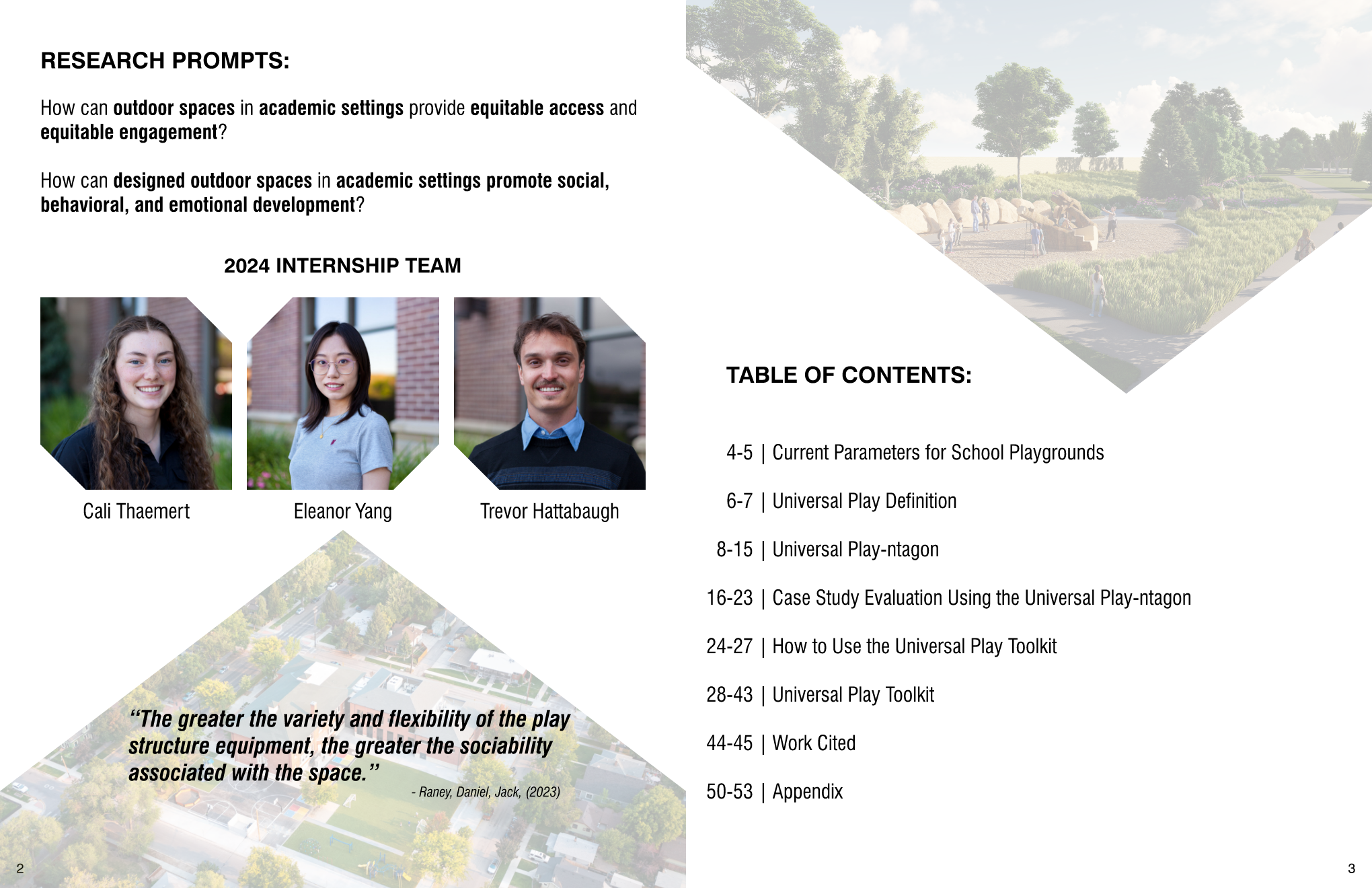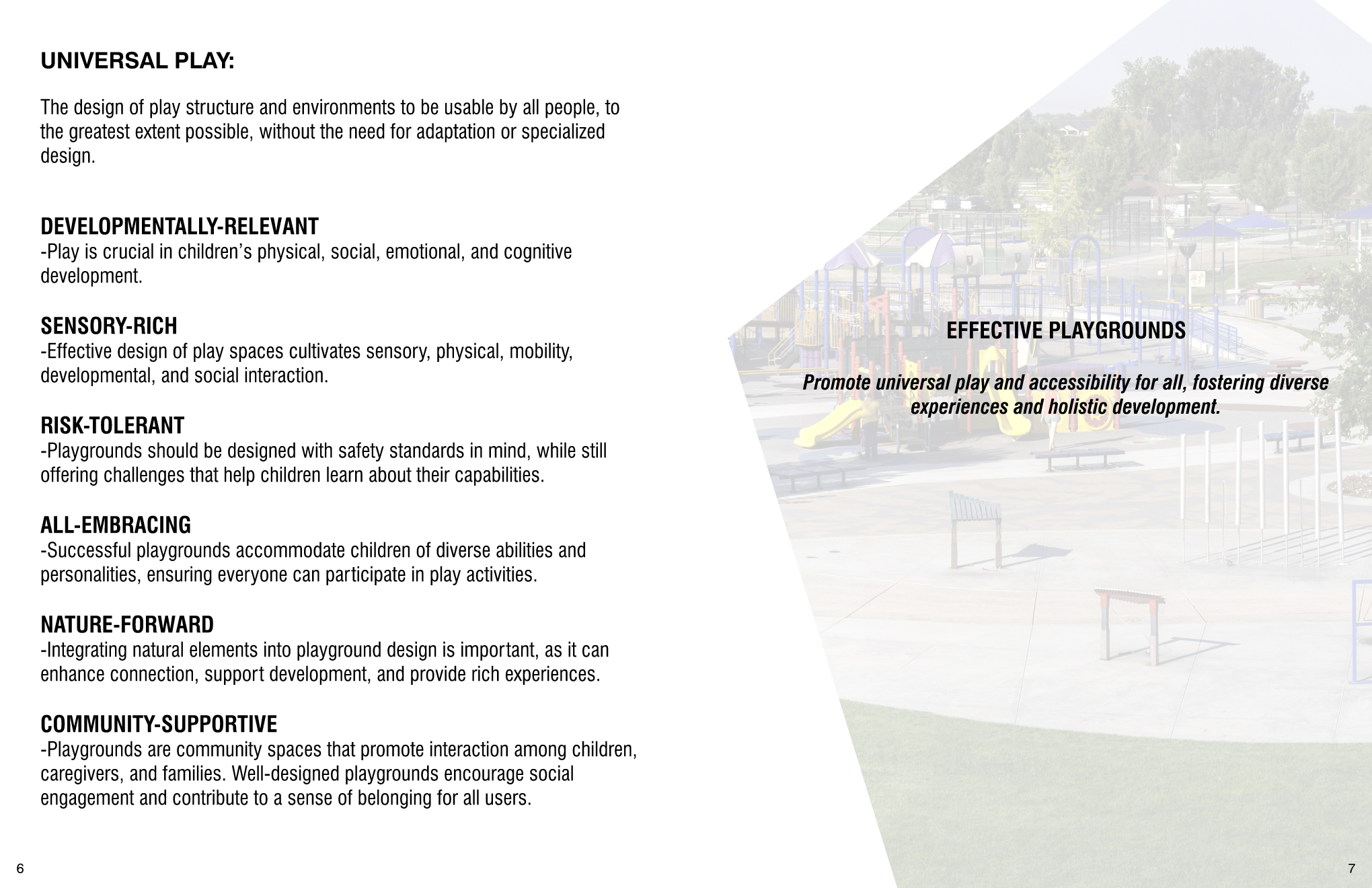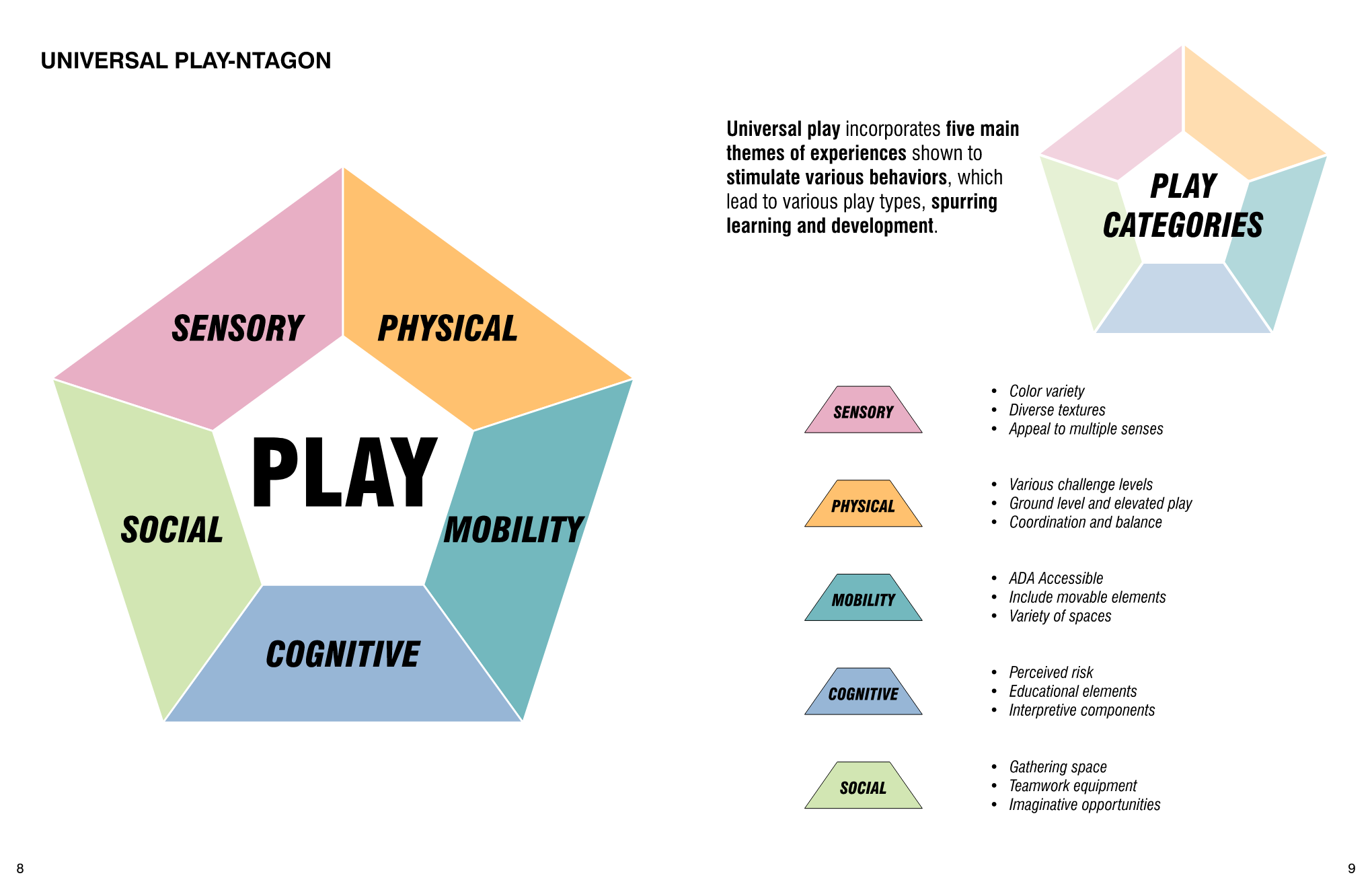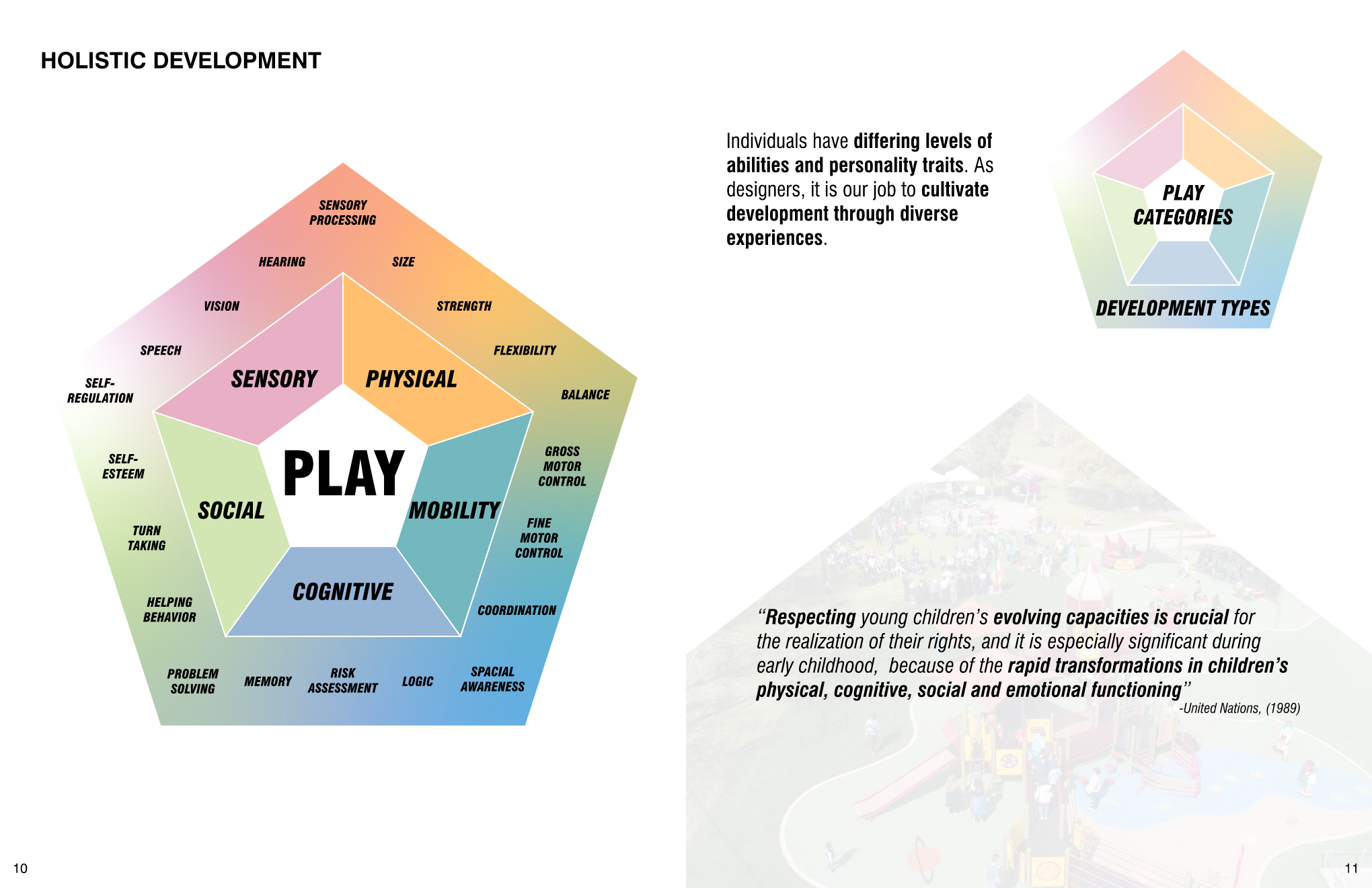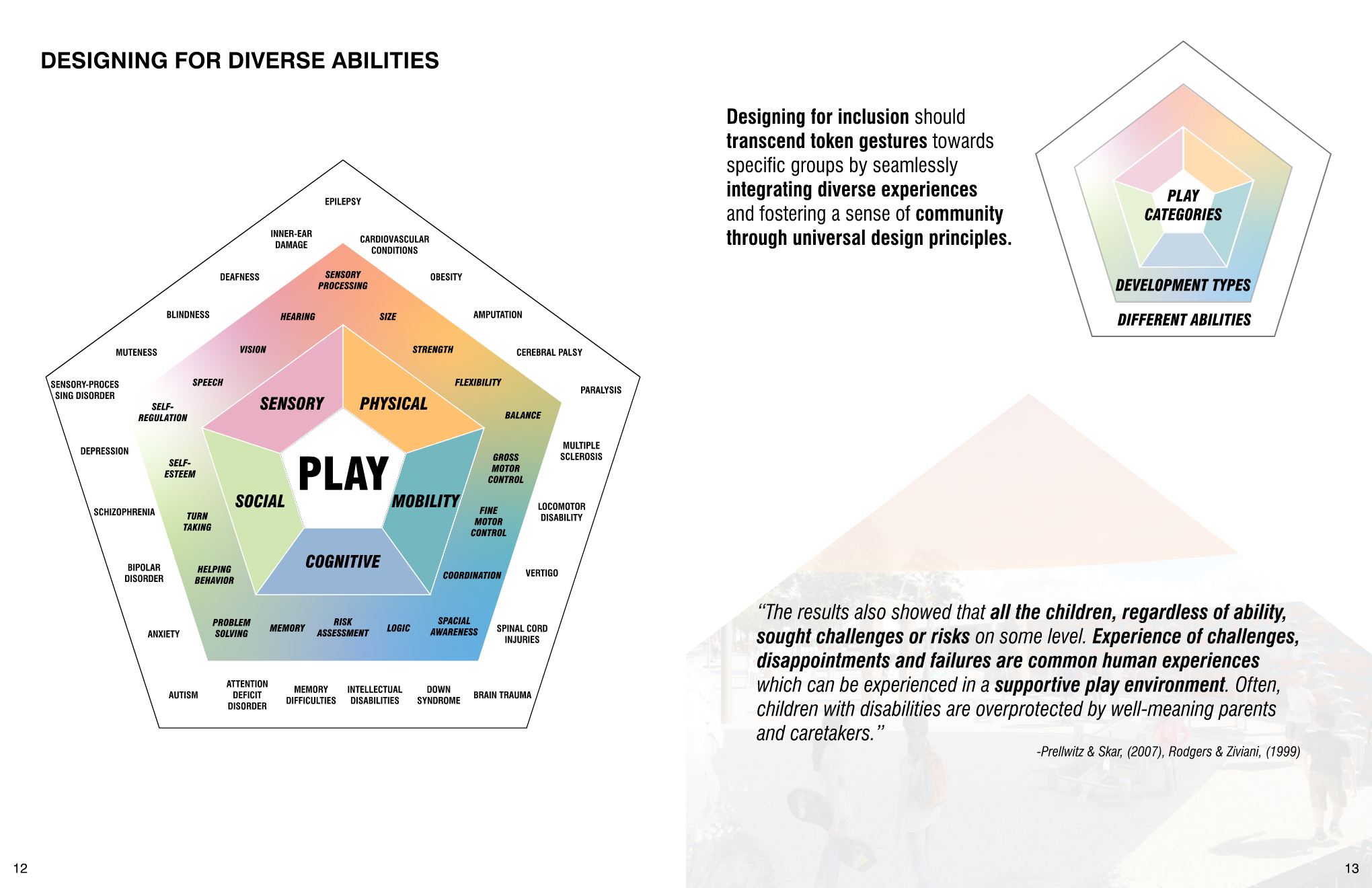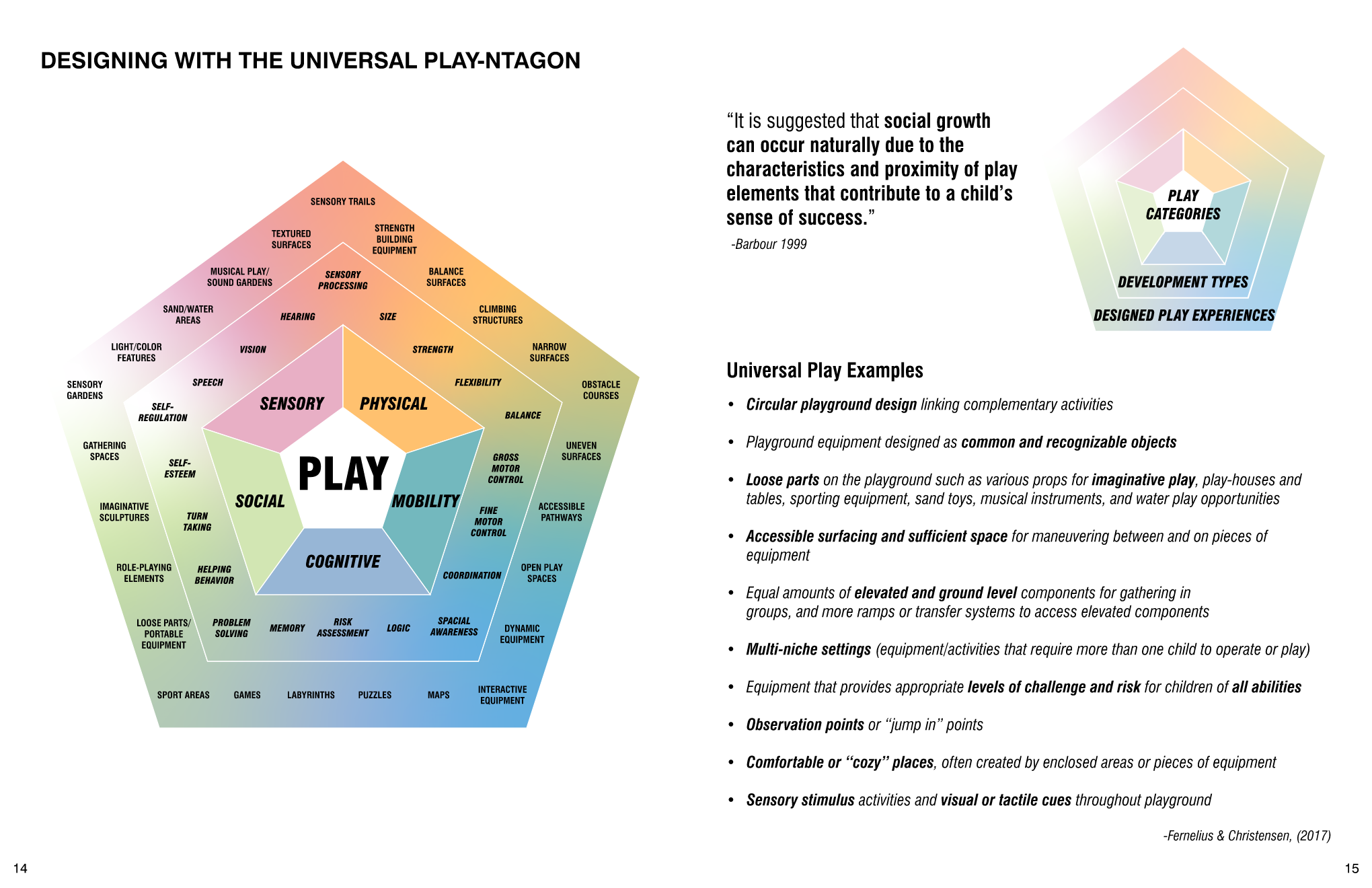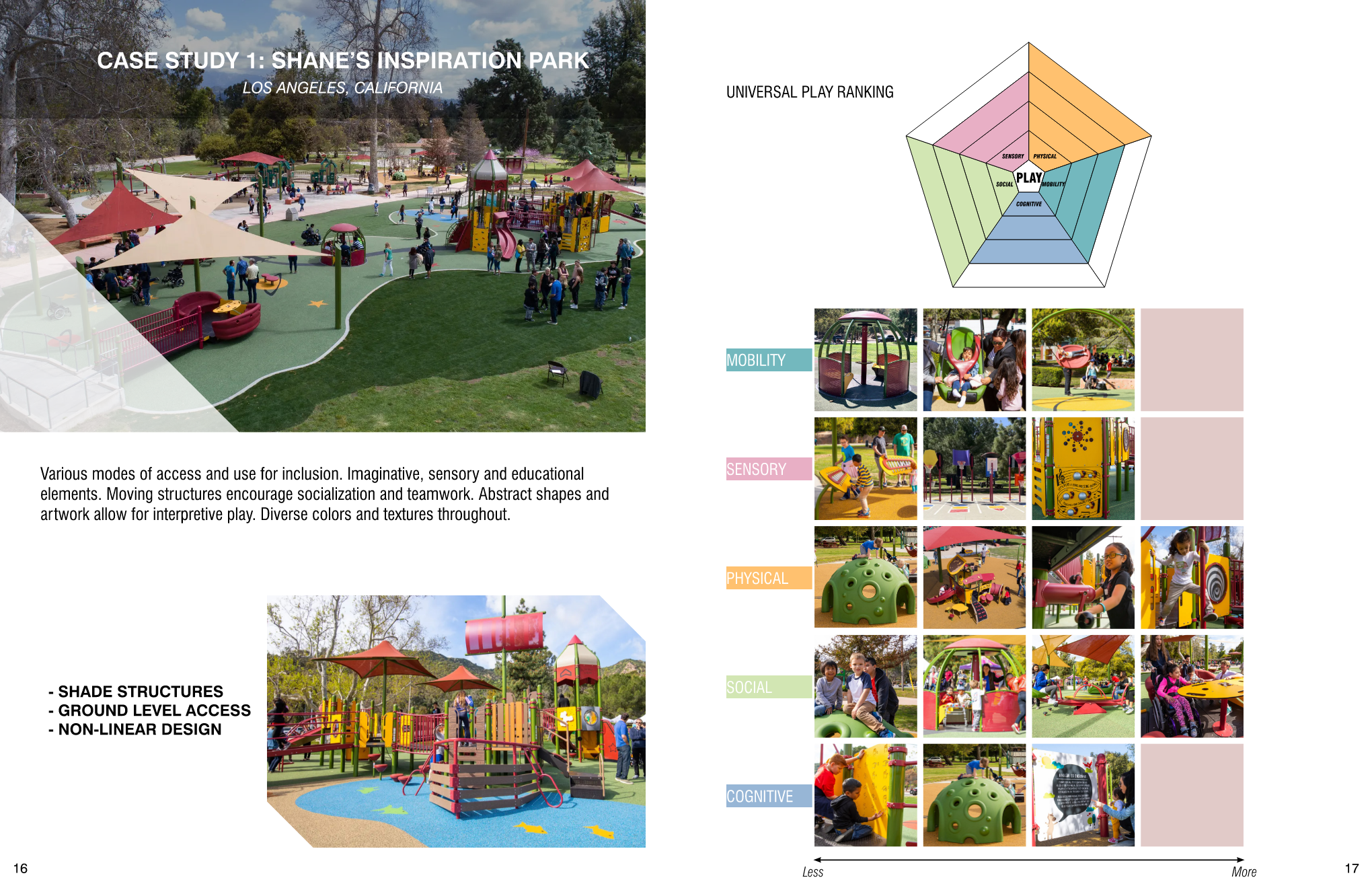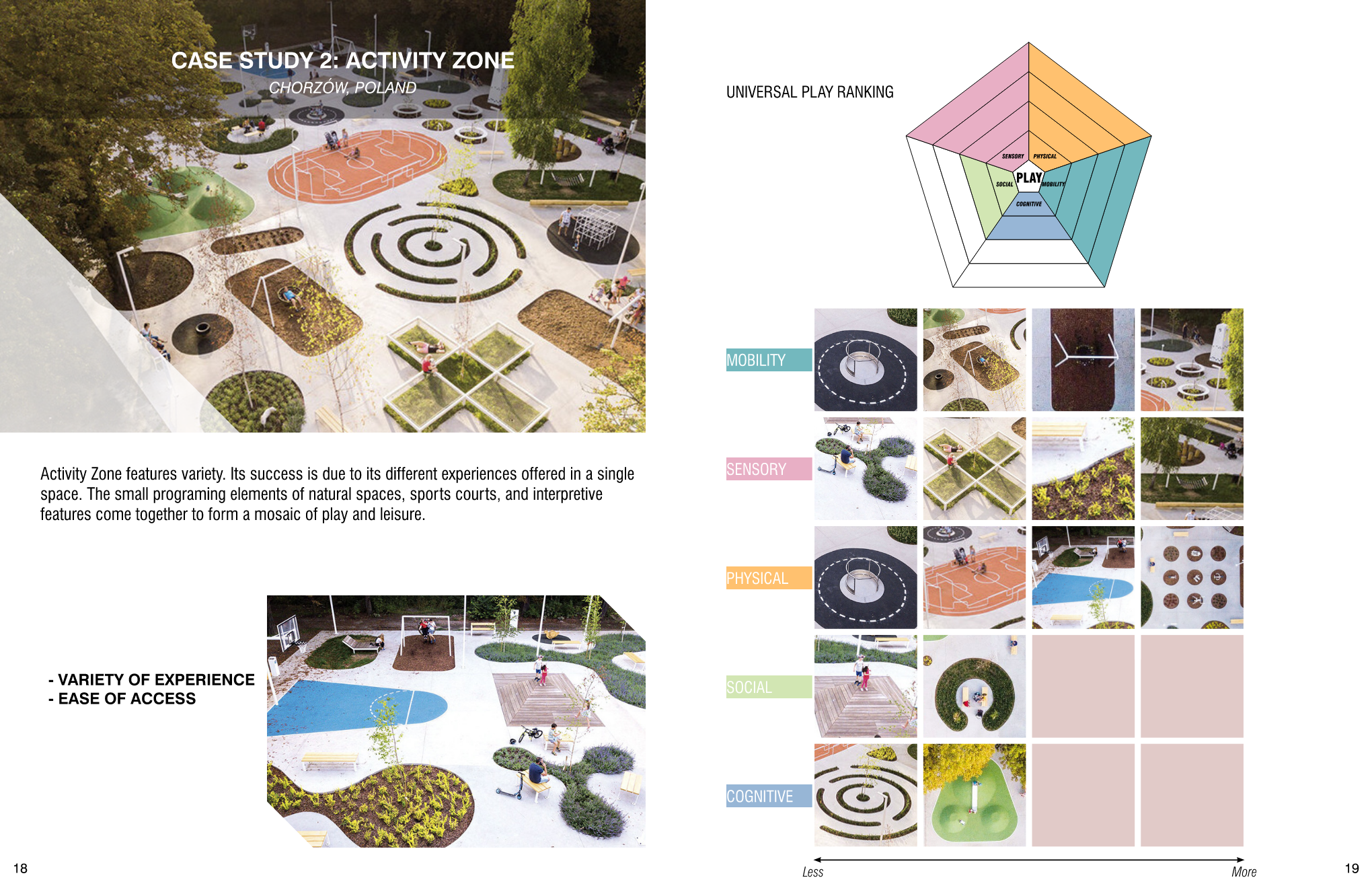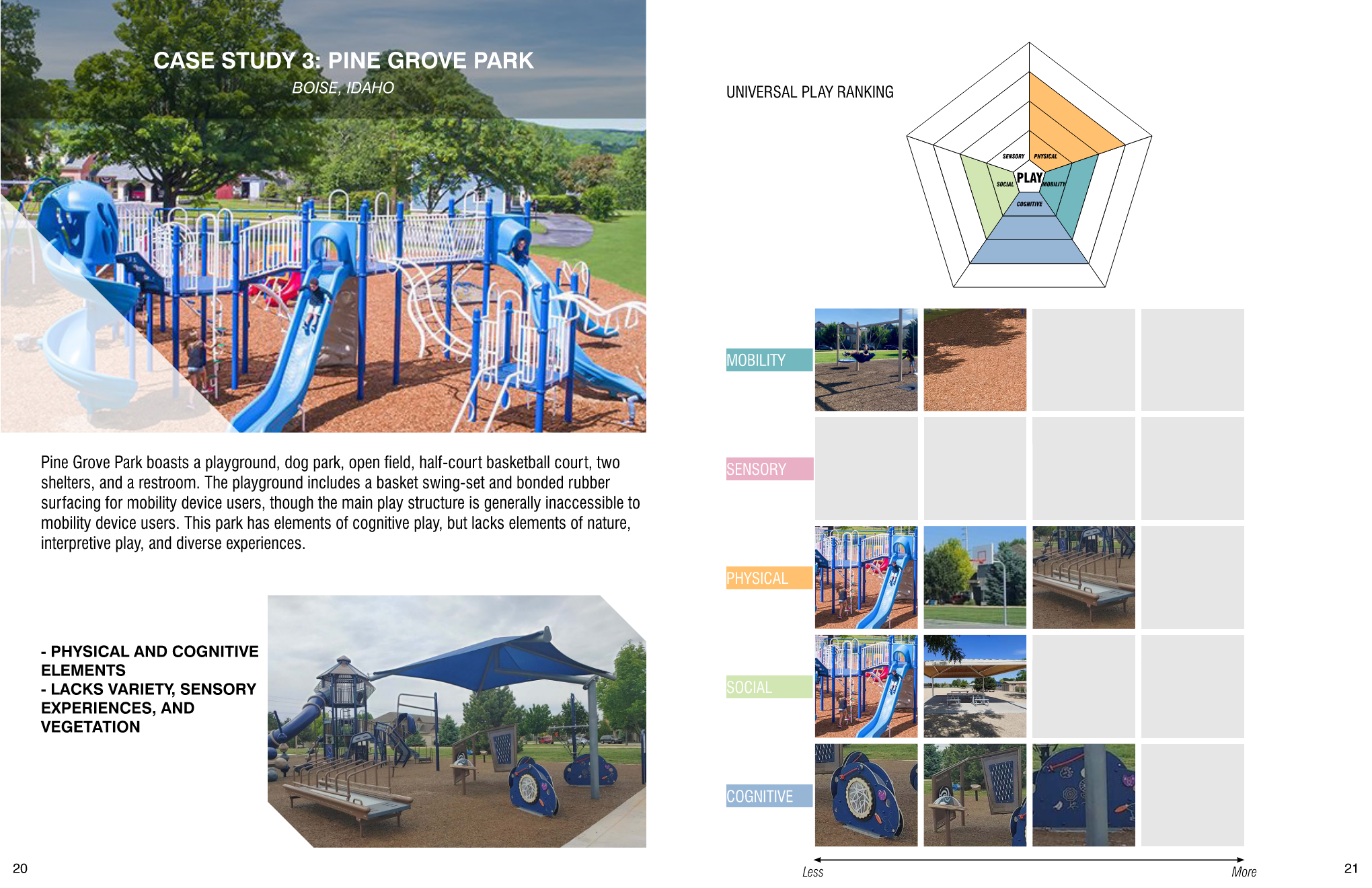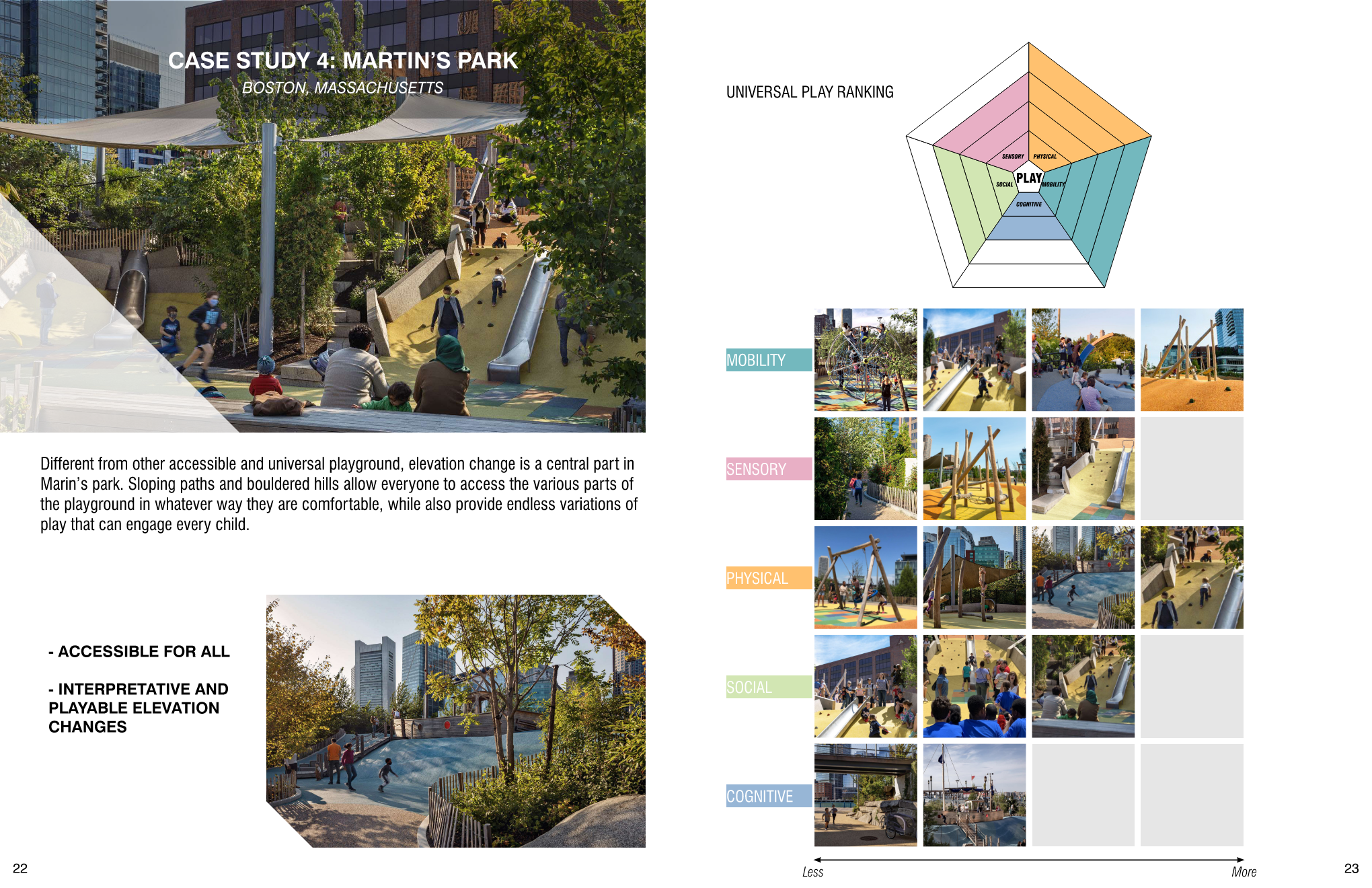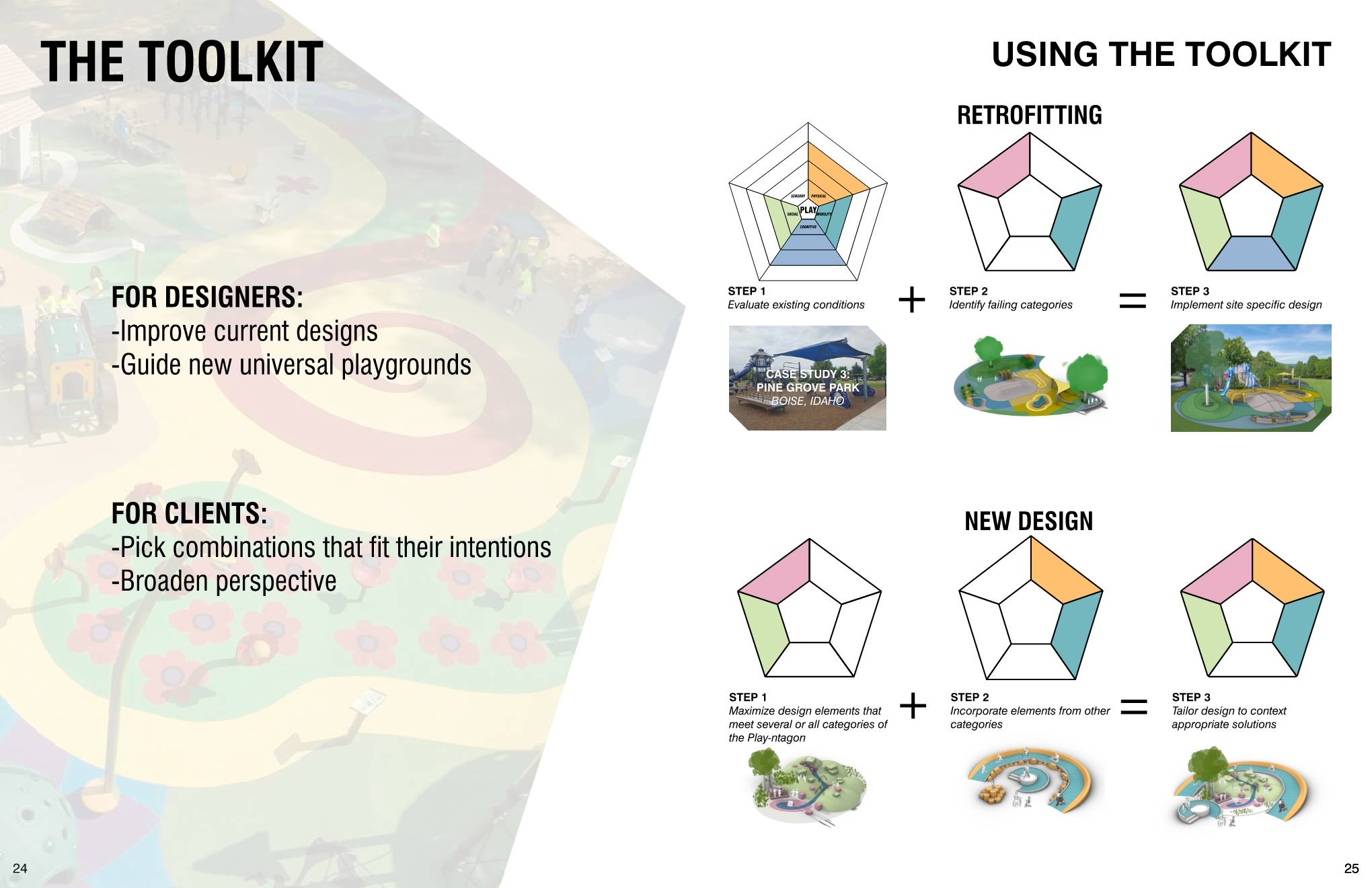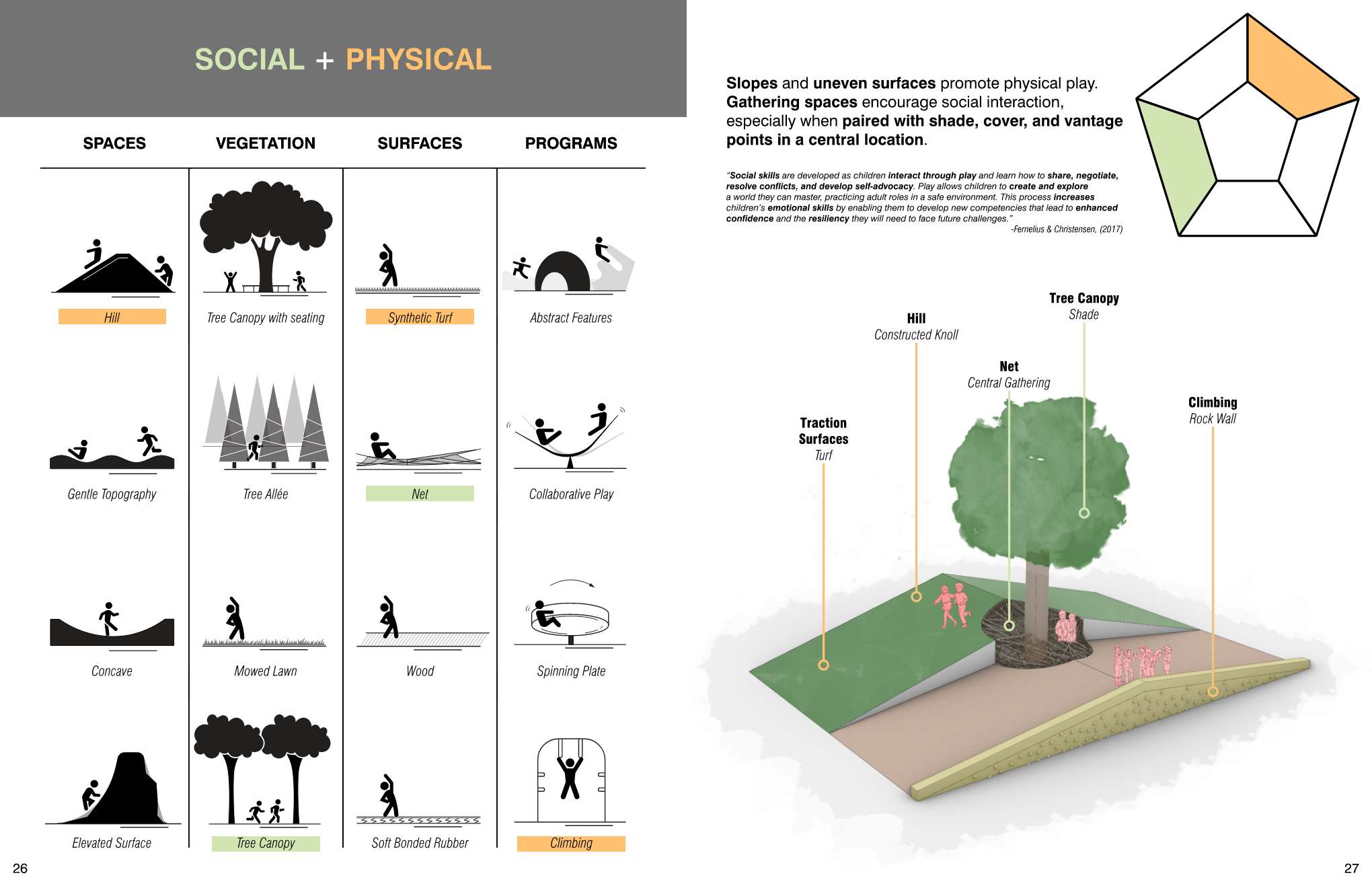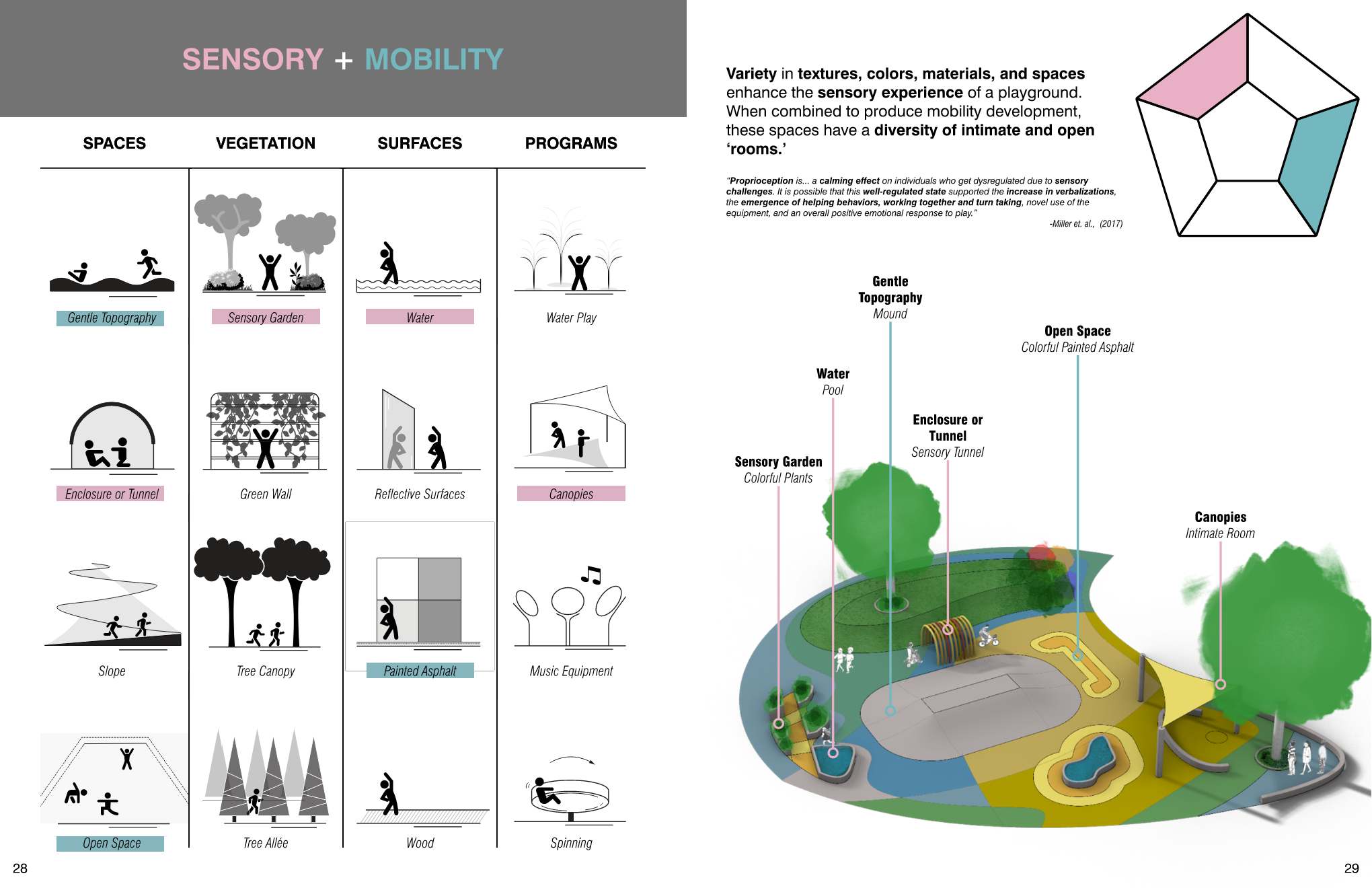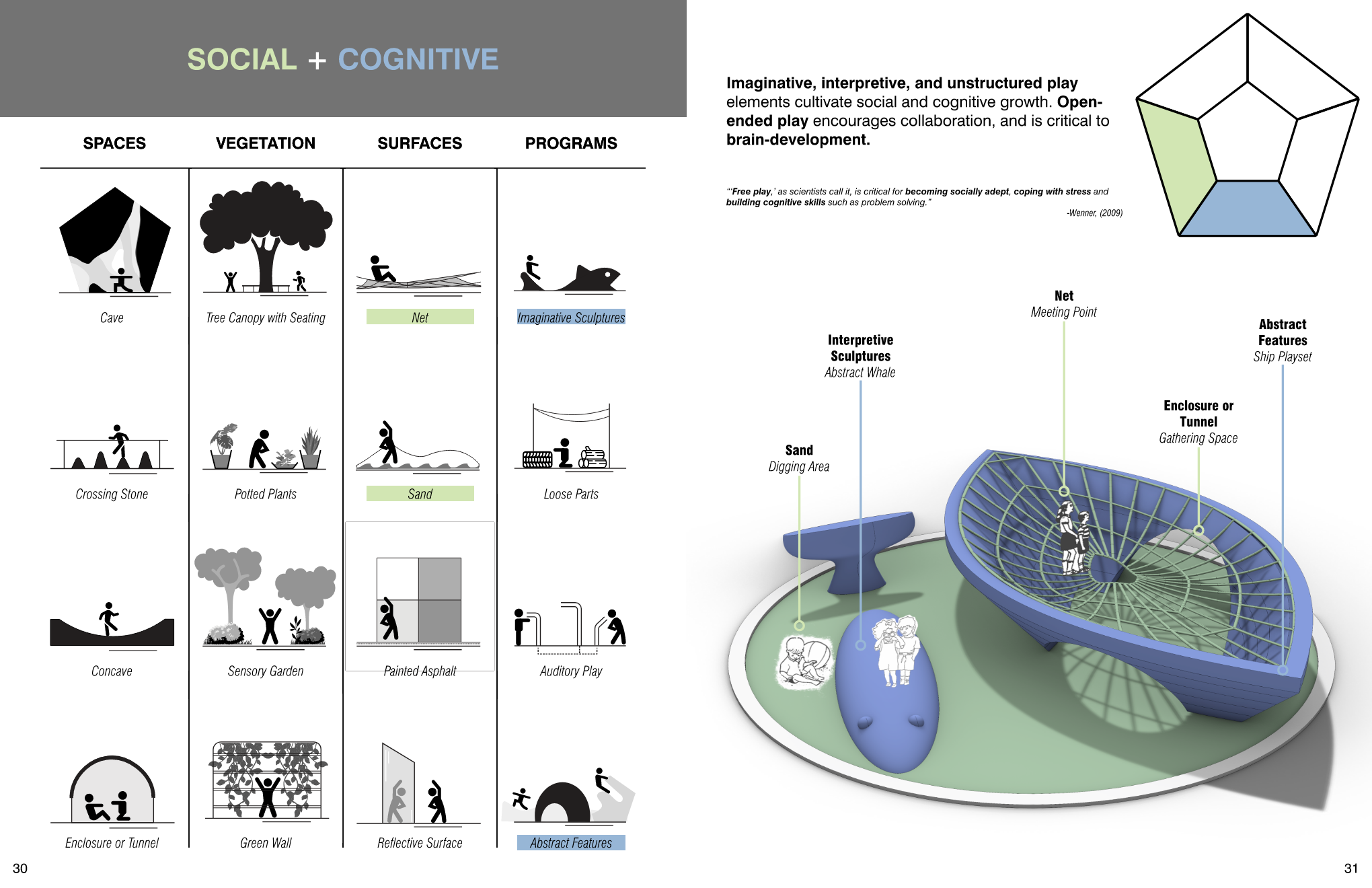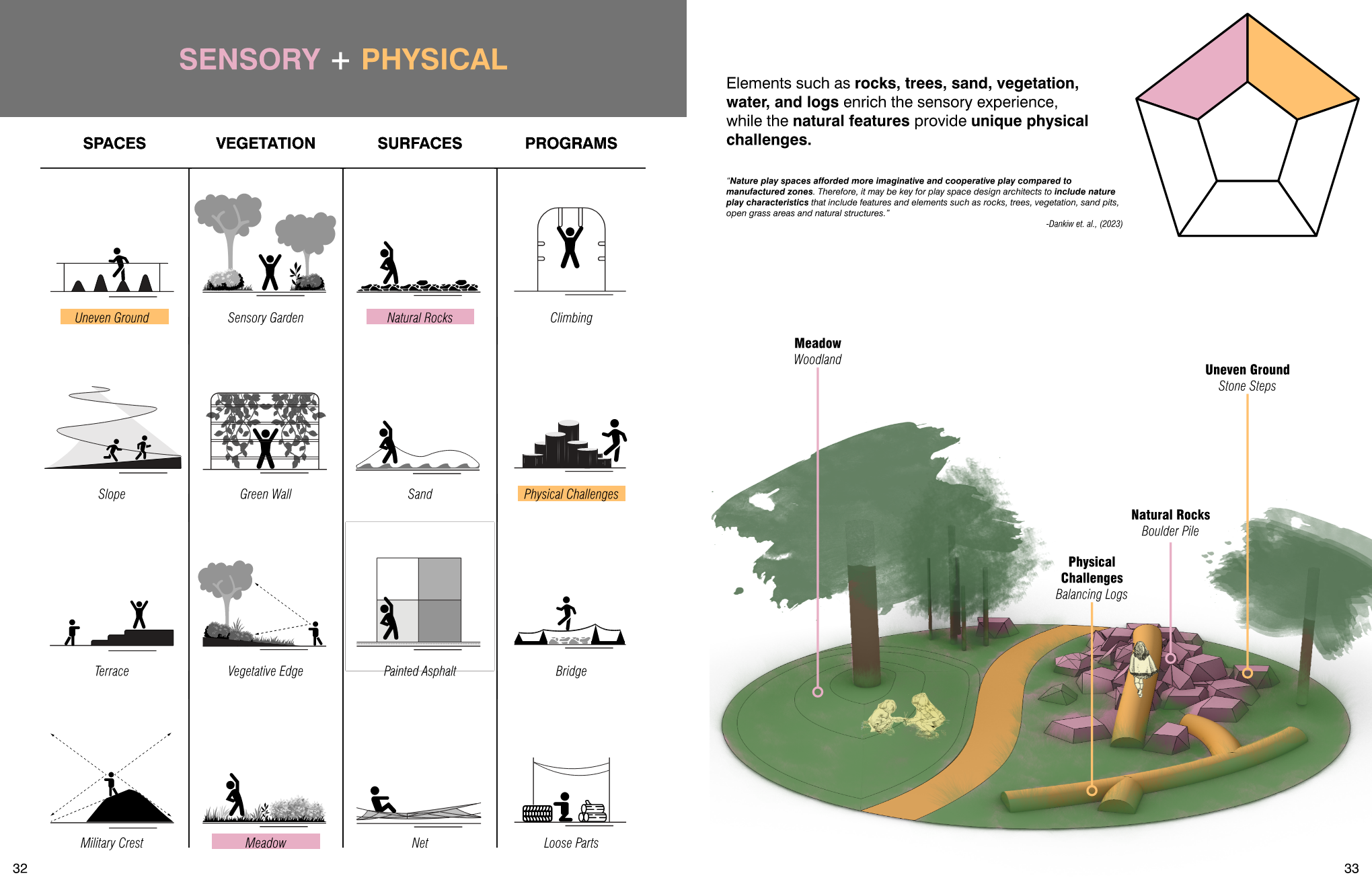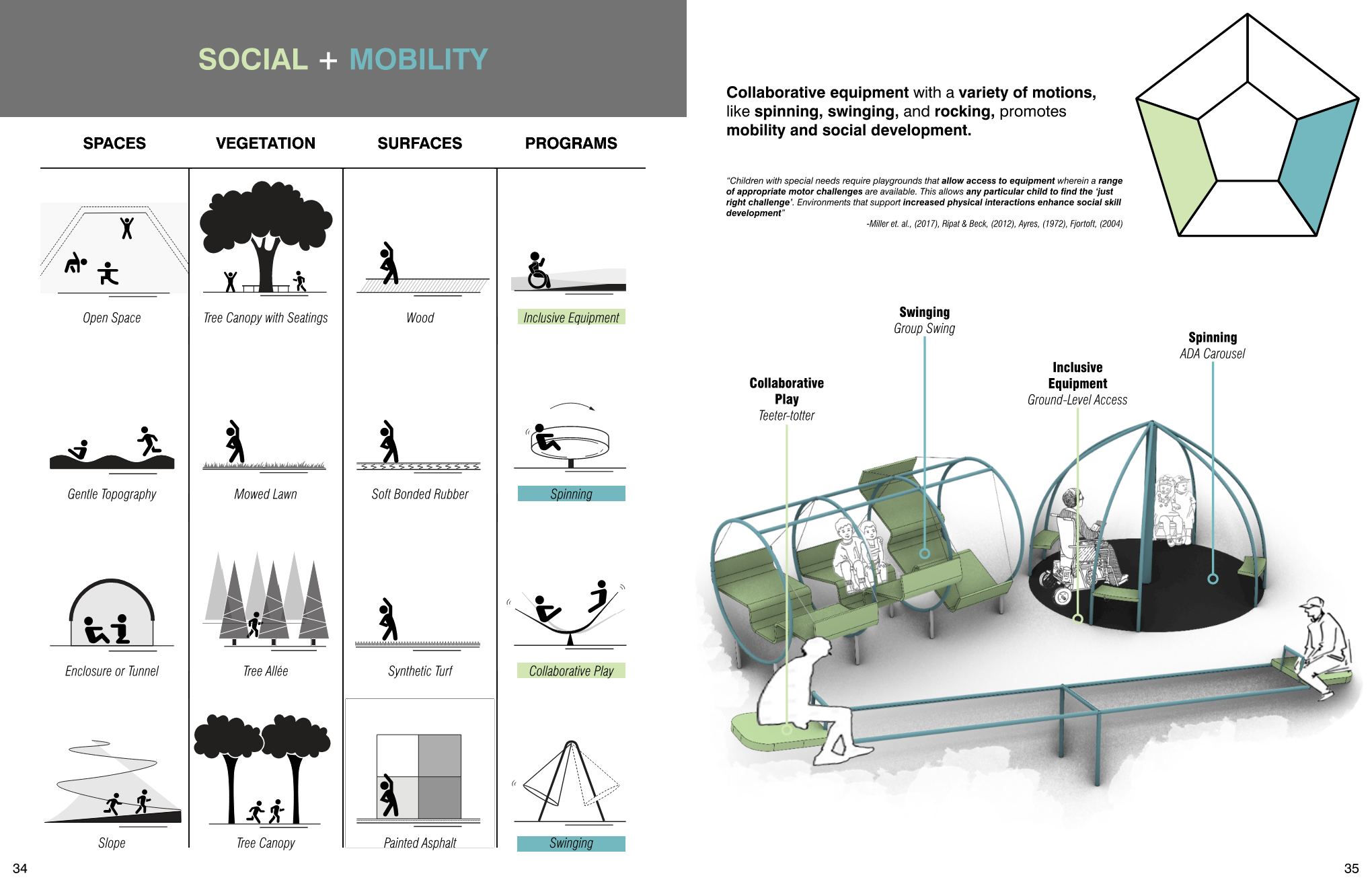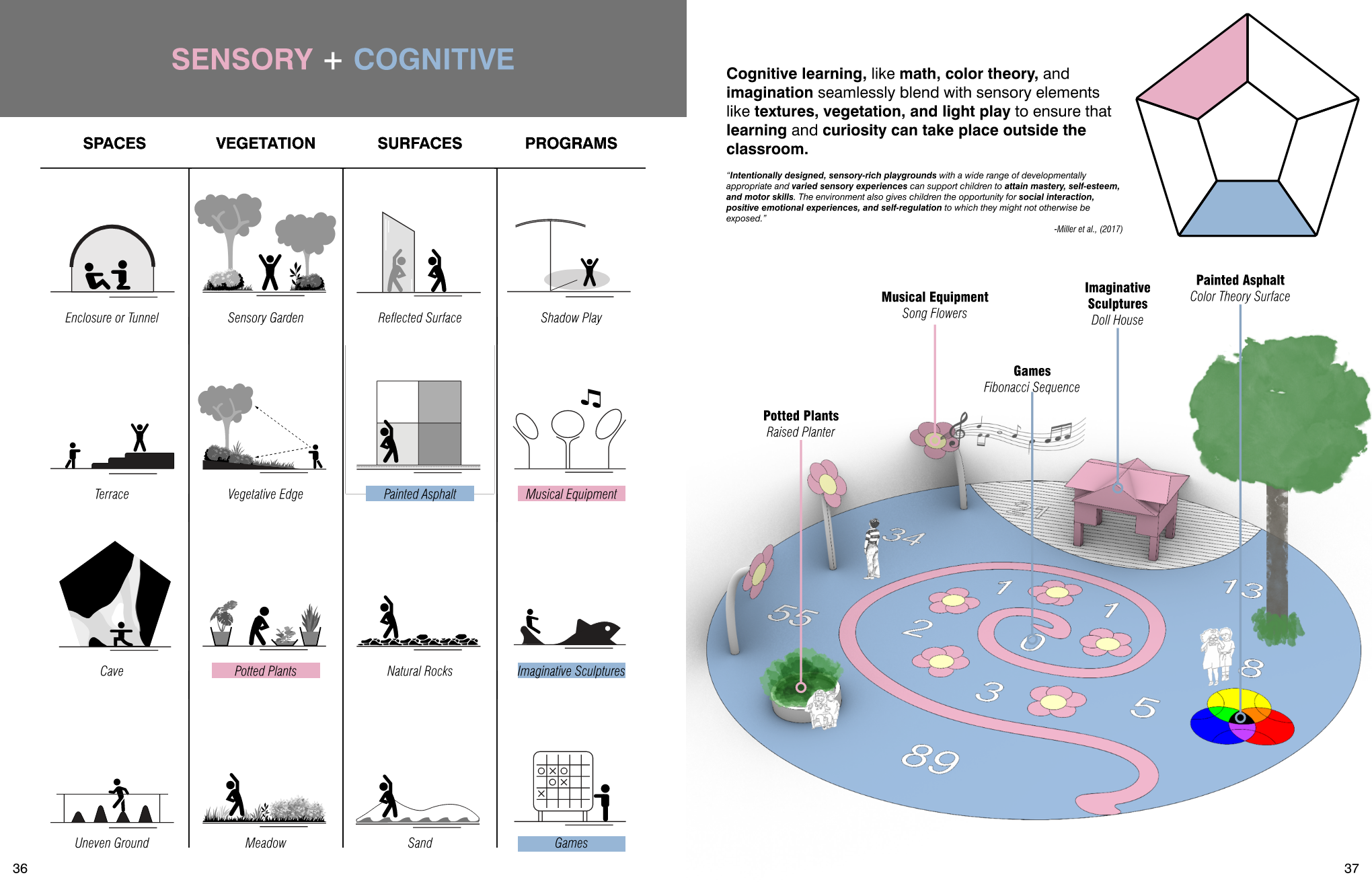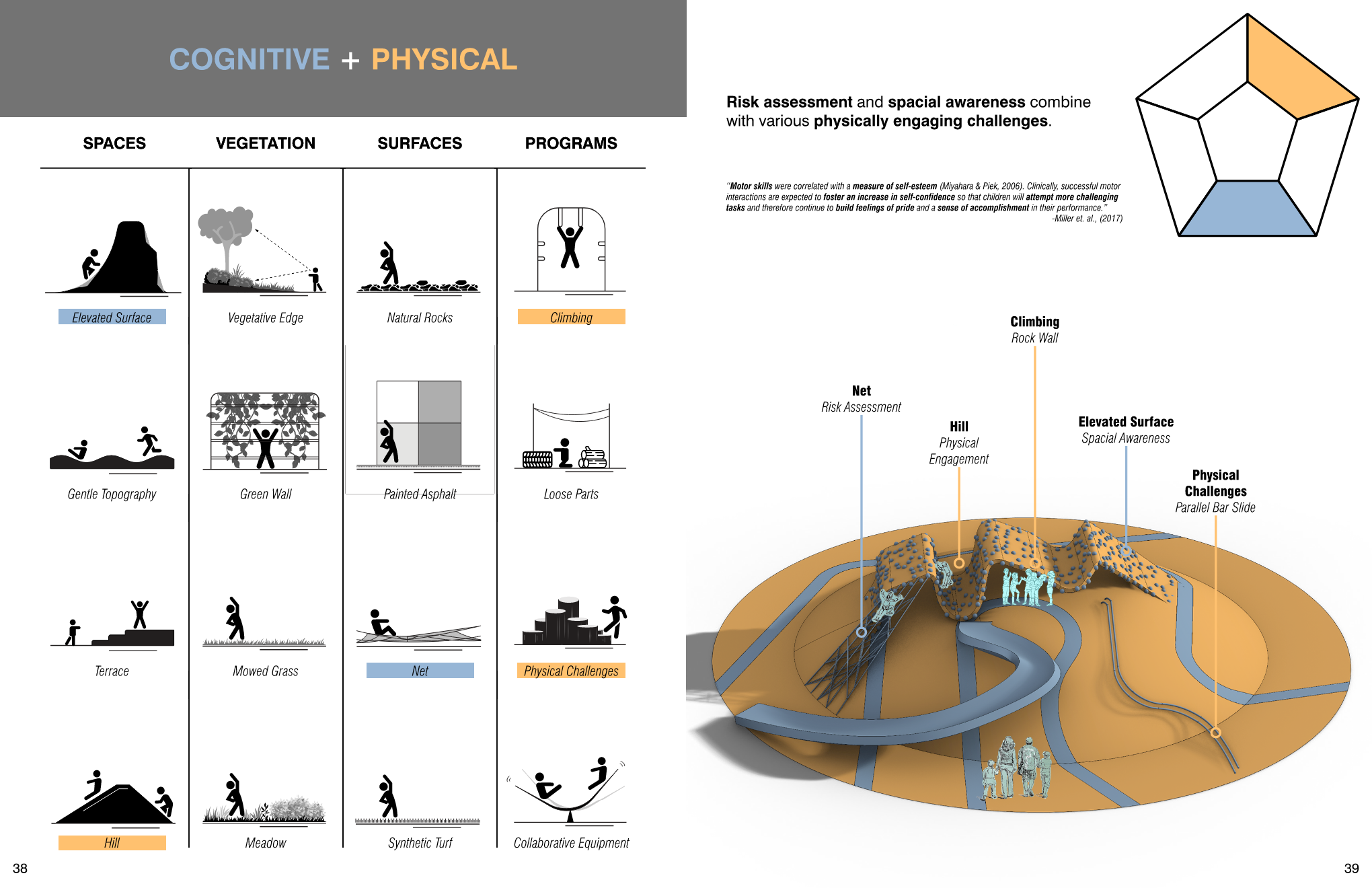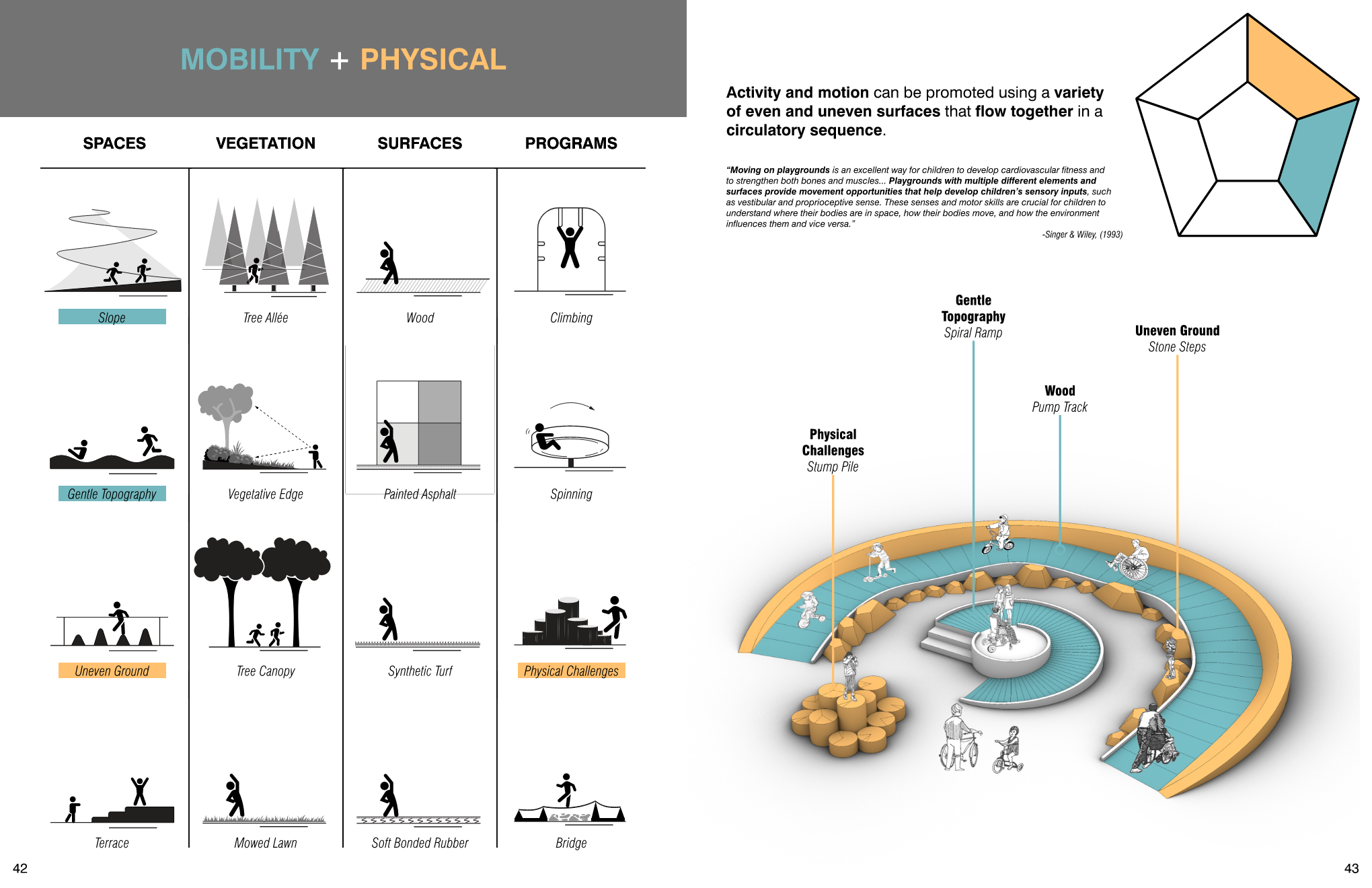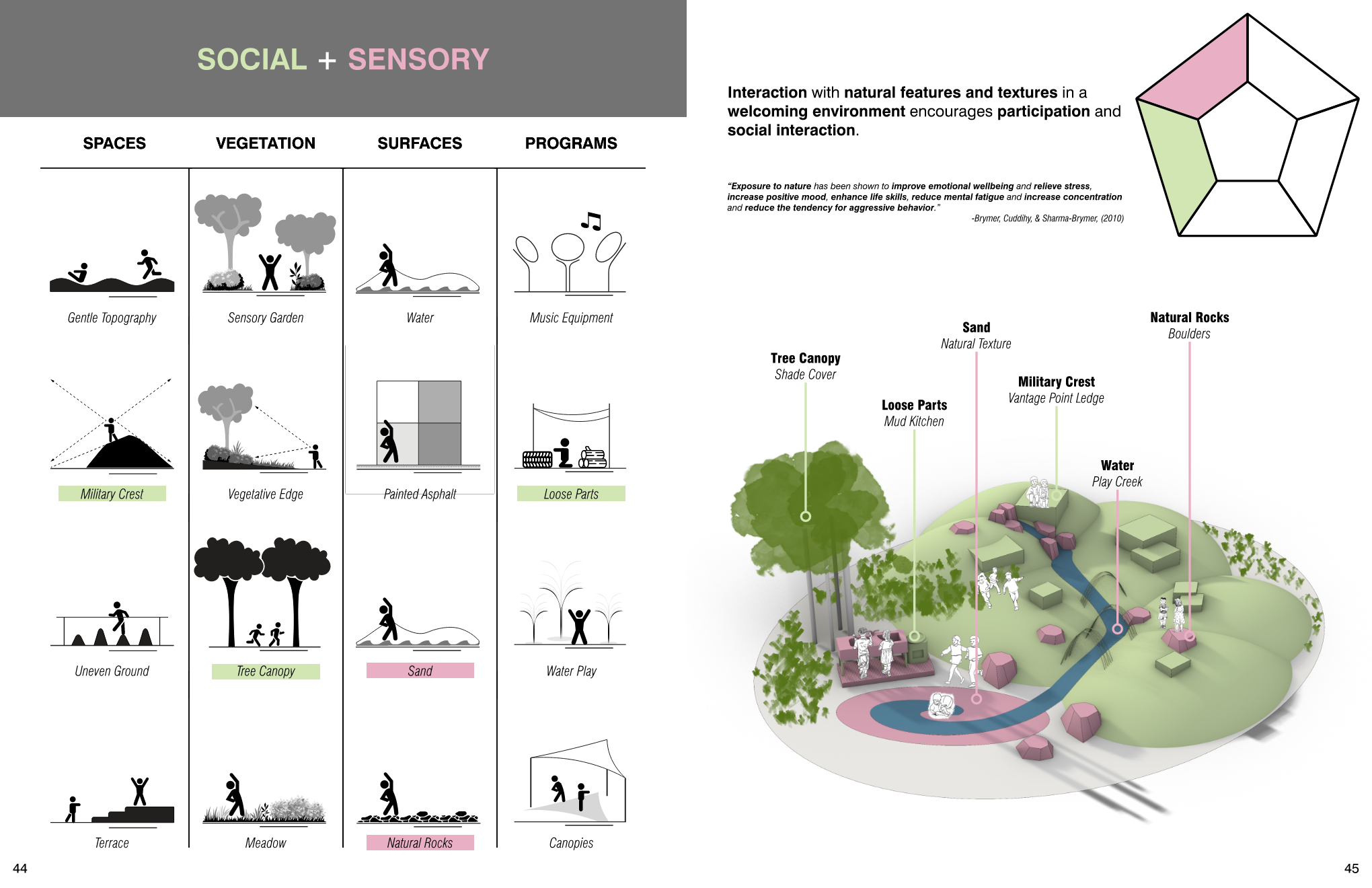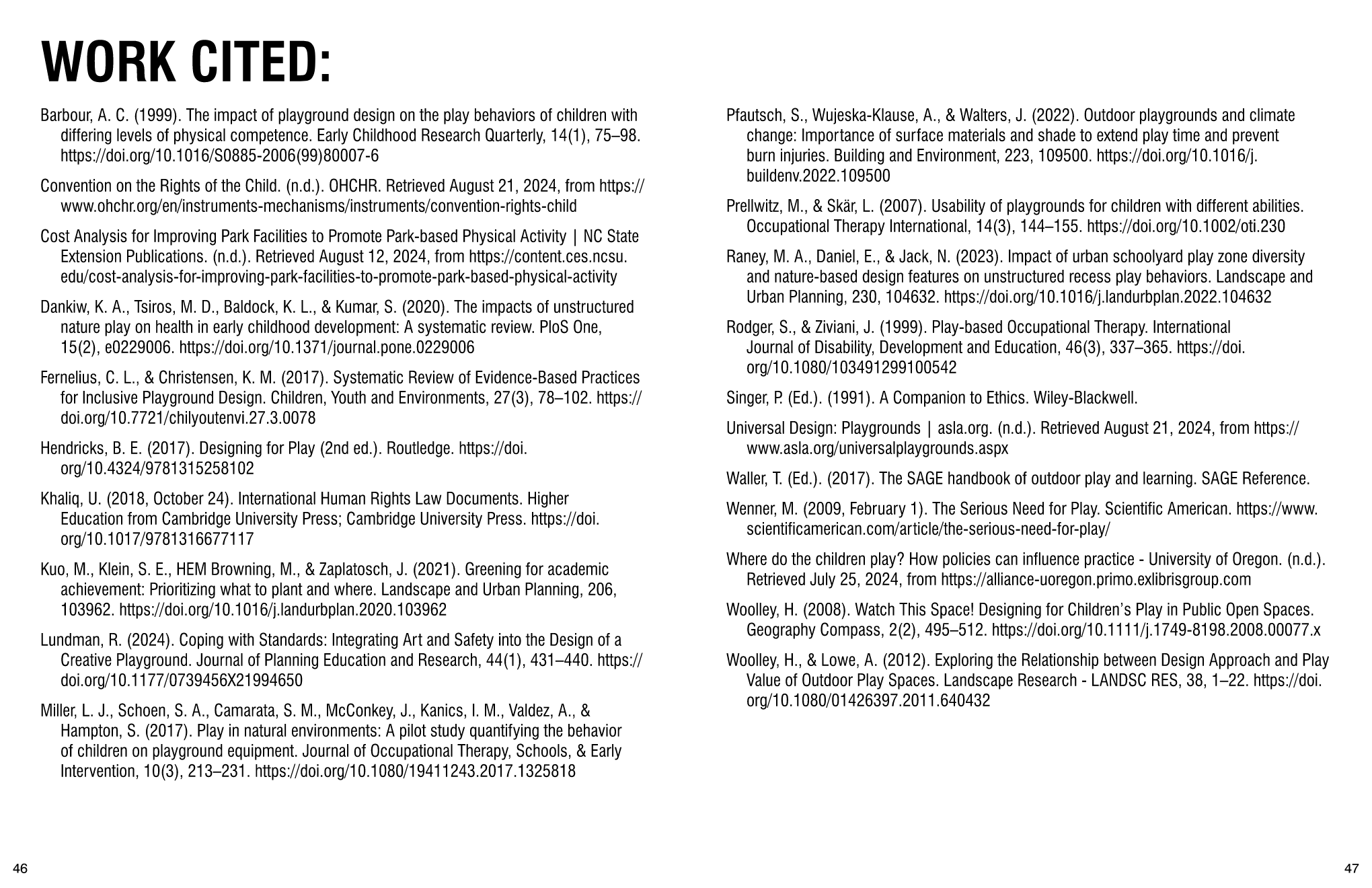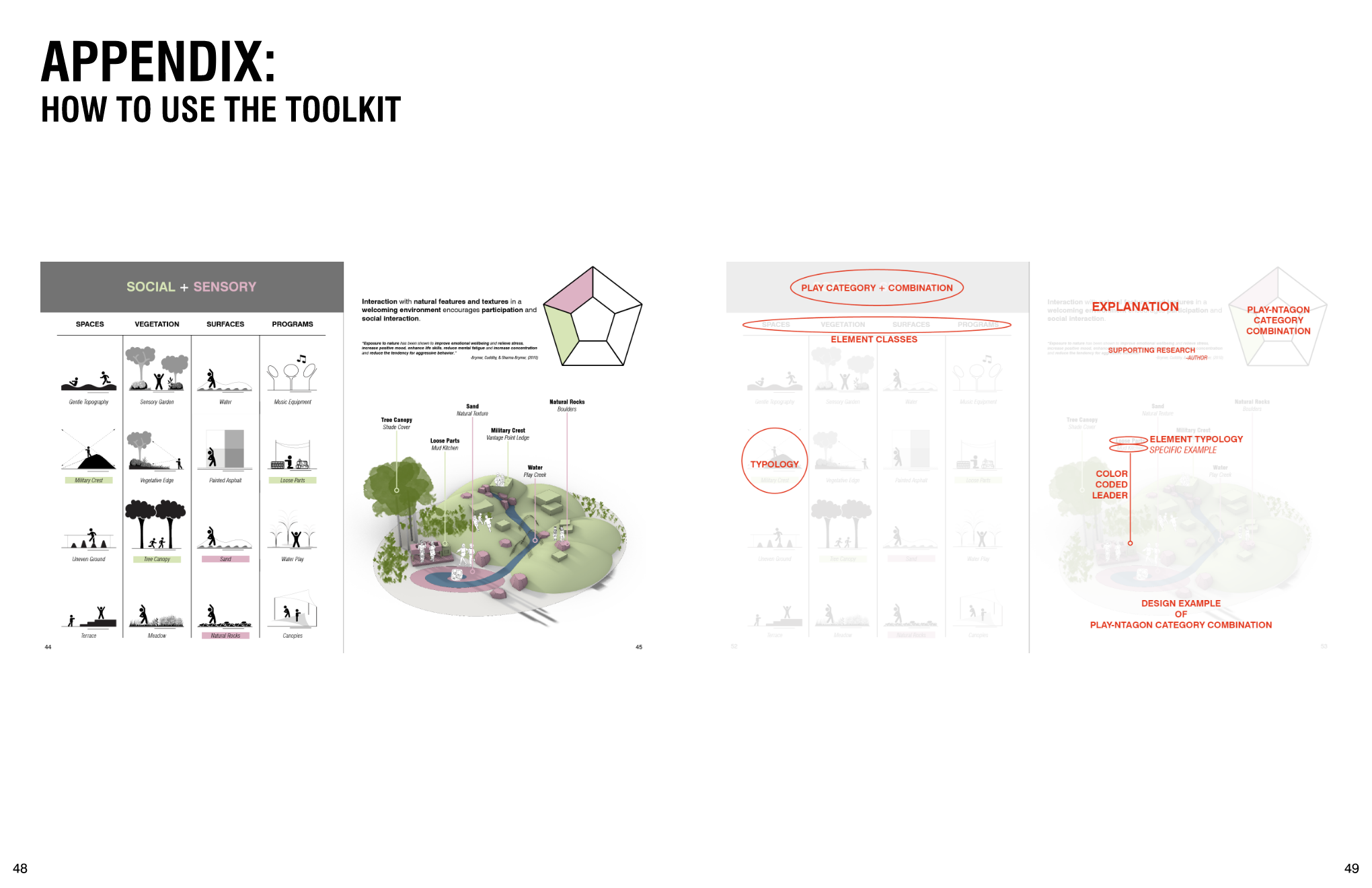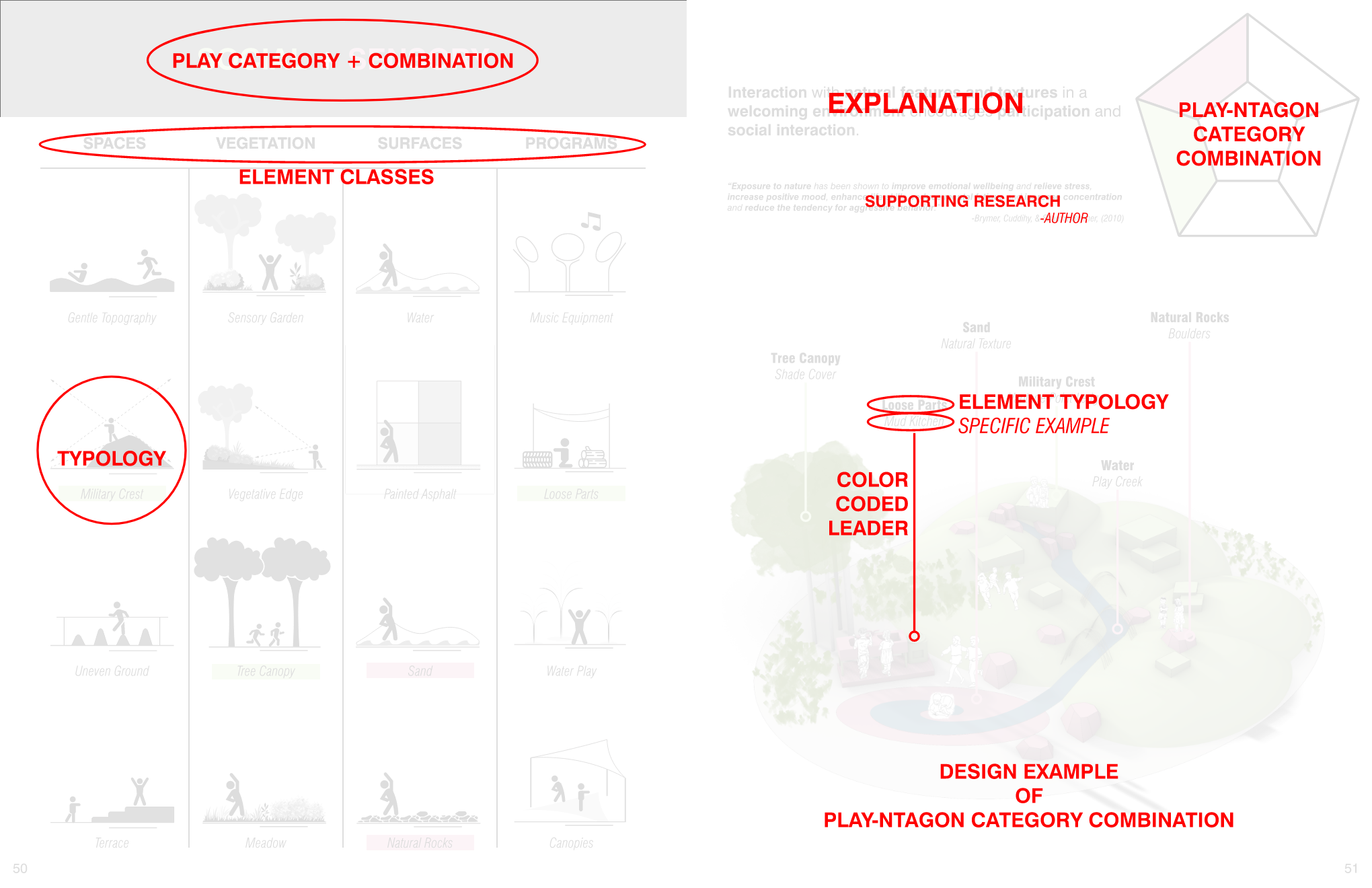The 2024 summer intern research and design project sought to answer two questions:
How can outdoor spaces in academic settings provide equitable access and equitable engagement for all users? How can designed outdoor spaces in academic settings promote social, behavioral, and emotional development?
By redefining playground design, the 2024 Internship Project offered a compelling vision for cultivating development and community through inclusive play.
Details
Year Completed
2024
Expertise
The 2024 Summer Interns consisted of Cali Thaemert (Civil Designer), Eleanor Yang (Landscape Designer), and Trevor Hattabaugh (Landscape Designer).
Partners
West Ada School District, Wake Forest University, and the Idaho/Montana Chapter of The American Society of Landscape Architects
Context
context
The research and design project was driven by a desire to rethink traditional school playground design approaches, which currently prioritize safety over creativity. These parameters have led to standardized design outcomes that meet the basic needs of the user group and provide low-maintenance, budget-friendly designs that allow schools to allocate resources elsewhere. This project theorized that play can be more than an escape from learning, but rather that play is learning and a means to support physical, social, emotional, and cognitive development. This project sought to challenge these traditional boundaries by introducing universal play concepts that focus on inclusivity, developmental growth, sensory-rich experiences, and nature-forward designs.
Process
Process
The team employed a comprehensive approach, beginning with an examination of how current playground design approaches can inadvertently hinder equitable access, engagement, and developmental opportunities by overemphasizing play as an escape from learning and by viewing play spaces as maintenance challenges that must be solved. Key elements incorporated into the new framework for universal play space design included risk-tolerant play that balances safety with engaging challenges, all-embracing spaces that ensure inclusivity for diverse abilities and personalities, nature-forward designs that integrate natural elements for rich sensory experiences, and community-supportive environments that foster social engagement and a sense of belonging.
Solution
Solution
To redefine school playgrounds, the team developed a Universal Play Toolkit to guide designers and clients in enhancing outdated playgrounds with cost-effective, relevant solutions and shaping new designs that balance safety, creativity, and inclusion. Universal play features included circular layouts connecting complementary activities, loose parts like props for imaginative play, multi-niche settings requiring collaborative social learning, cozy spaces for contemplation, and accessible surfaces with ample maneuvering space. Core design themes focused on sensory and physical development through natural elements like logs and rocks, social and cognitive growth via open-ended collaborative play, and mobility and physical engagement with flowing, uneven surfaces that promote proprioception and spatial awareness.
Impact
Impact
This project demonstrated how playgrounds can cultivate social, emotional, and cognitive growth in children, support communities by fostering inclusive engagement, and influence future playground designs to move beyond token gestures of inclusion to embrace universal, seamless solutions.
